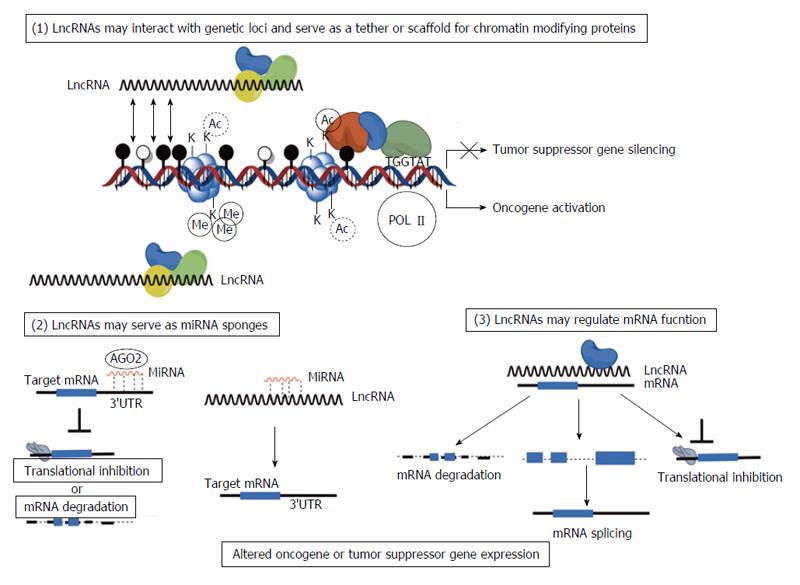Copyright
©2014 Baishideng Publishing Group Co.
World J Clin Oncol. May 10, 2014; 5(2): 134-141
Published online May 10, 2014. doi: 10.5306/wjco.v5.i2.134
Published online May 10, 2014. doi: 10.5306/wjco.v5.i2.134
Figure 1 Diverse functions of long non-coding RNA in human cancer cells.
Long non-coding RNA (lncRNA) are known to be active regulators of gene expression through transcriptional, post-transcriptional, and translational mechanisms. LncRNA dysregulation in cancer may provide oncogenic signaling or loss of tumor suppressive function. LncRNAs are known to serve as tethers and scaffolds that direct chromatin modifying enzymes such as Polycomb group proteins to regulatory regions of DNA. This may result in upregulated transcription of oncogenic protein coding genes or loss of transcription of tumor suppressor protein coding genes. LncRNAs also may serve as competitive endogenous RNA for microRNAs (miRNAs) (sponges) that then inhibit miRNA function thereby preventing miRNA from interacting with target mRNAs. Finally, lncRNAs can interact directly or indirectly with mRNAs in the nucleus and cytoplasm regulating mRNA splicing, mRNA stability, and mRNA translation.
- Citation: Eades G, Zhang YS, Li QL, Xia JX, Yao Y, Zhou Q. Long non-coding RNAs in stem cells and cancer. World J Clin Oncol 2014; 5(2): 134-141
- URL: https://www.wjgnet.com/2218-4333/full/v5/i2/134.htm
- DOI: https://dx.doi.org/10.5306/wjco.v5.i2.134









